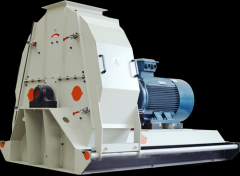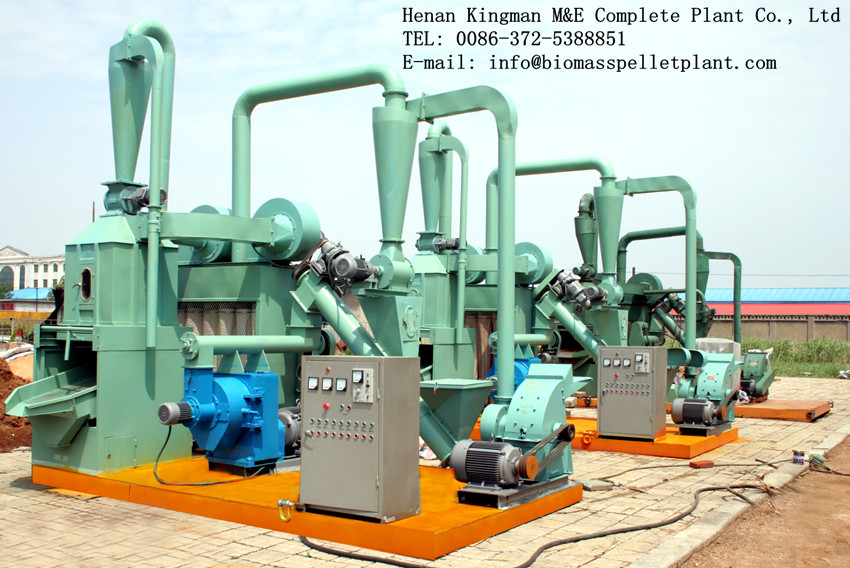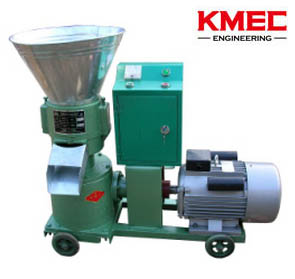Wood Pellet and Wood Pellet Mill Development in Germany
Wood Pellet Development of Germany
1. Regulatory framework market drivers and barriers
The German wood pellet market and application of wood pellet mill have been one of the markets with fastest development in the past years and still with a significant growth potential ahead. In particular the market for wood pellet mills, pellet boilers and pellet stoves for small- and medium-scale applications has experienced a rapid increase. Factors as the legal framework promoting the use of biomass pellets in the residential sector and the wide use of pellet mill and pellet plant, increasing oil and gas prices gave incentives for house owners to install wood pellet heating systems. In particular, the market incentive programme (MAP) a financial support instrument and the Renewable Energies Heat Act (EEWärmeG) will give impetus for a reinforced utilization of wood pellets on the small-scale market. Thus, since 2000 one of the largest wood pellet markets worldwide could establish. And the wood pellet mill and wood pellet plant locations are scattered in a more dense way across the whole region.
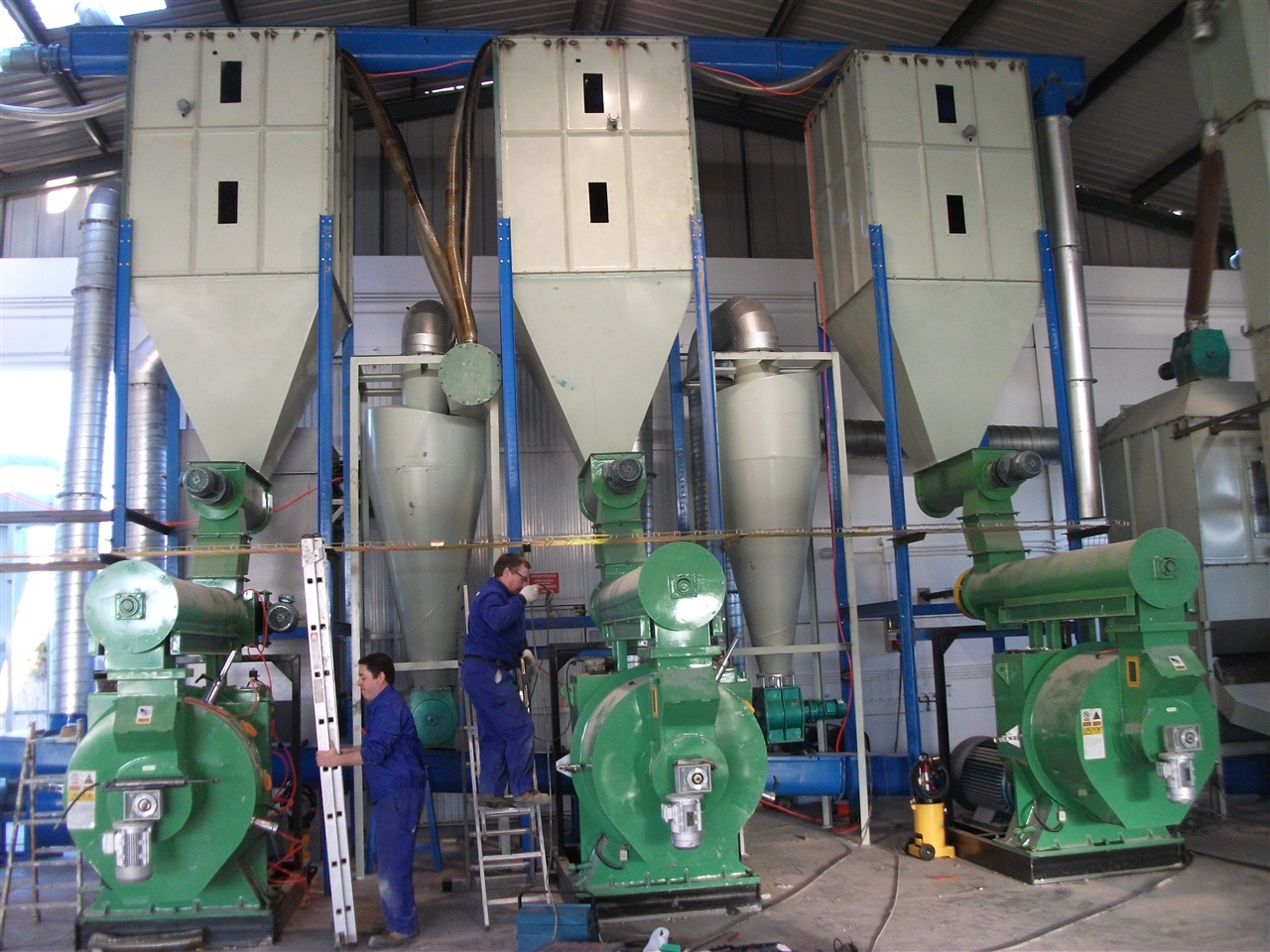

2. Production capacity and feedstock
The production and production capacity of wood pellets in Germany is the highest one in Europe due to the extensive use of wood pellet mills and popular establishment of wood pellet plants. At the moment, 63 biomass pellet plants are located in Germany with a production capacity of 3.2 million tons and a respective production of 1.7 million tons in 2010. In comparison, in 2006, only half of the pellet plants were in place in Germany with a capacity of 900,000 tons. Currently, additional biomass pellet plants are in the planning process. From the total production volume about 75% is intended for the heating market (certified wood pellets) and the remaining for power plants for electricity generation. The majority of the certified wood pellets is consumed within the country (over 90%); however, the biomass pellets used for power generation are entirely exported. This is due to the fact that wood pellets are not used in power stations in terms of co‐firing in Germany yet. In respect to the raw material used for the pellet production 70% were sawmill by‐products as sawdust and 30% low quality round wood.
READ: HOW TO START A BIOMASS PELLET PLANT
READ: HOW TO START A BIOMASS PELLET PLANT
3. Consumption
Looking at the consumption, the figures for 2010 amount to 1.2 million tons of wood pellets consumed in the heating market. Until 2006, the coverage of the national demand was dependent
on imports. Since then the amount produced and demanded broke even. The development in the number of pellet heating systems – both on a yearly base and cumulative – is shown. Until 2006 a steady growth can be observed. For example, in 2005 and 2006 the sales figures increased by 60%, however after that there was a noticeable drop with a following market recovery. The reason for this development was a depletion of the budget of the promotion programme MAP in the second half of 2006 which is a significant policy instrument to promote the use of pellet heating systems.This was reflected in a rapid decline in pellet stove and pellet fireplaces and boiler sales. A further disturbance of the market could be observed in May 2010 as the programme experienced a budget freeze until July. These stop‐and‐go measures caused uncertainties among the investors leading to a smaller number of pellet heating systems installed in 2010.
In total more pellet boilers than pellet stoves are installed, the ratio is about 65% to 35%.
READ: WOOD PELLET MARKET IN THE UK
READ: WOOD PELLET MARKET IN THE UK
4. Trade and logistic aspects
The main export countries for industrial wood pellets are the United Kingdom, Sweden and Denmark. With respect to the trade of certified wood pellets the main trading partners are Italy and Austria for exporting and Denmark, Russia, the Baltics and Czech Republic as well as Belarus (a rather new trading partner) for importing. In the past the trade of premium wood pellets mainly took place with bordering countries as Austria and Czech Republic. However, imports originate increasingly from Eastern European countries like the Baltics and Belarus.
READ: PELLET FUEL DEVELOPMENT IN SWEDEN
READ: PELLET FUEL DEVELOPMENT IN SWEDEN
5. Pellets quality and standard
Beginning of 2010 a new standardisation for wood pellets called EN 14961‐2 has been introduced to the German market. This new standard is going to replace the existing one DIN. EN 14961‐2 is a Europe‐wide standard, which assures high quality pellet production and supports the harmonisation of pellet production within the different European countries. The corresponding certification system is called ENplus, which is primarily based on the specifications of the EN 14961‐2 standard. Within this system three wood pellet qualities with different application purposes and thus wood pellet characteristics will be certified. These qualities are called ENplus‐A1, ENplus‐A2 and EN‐B. So far already large and well‐known wood pellet producers as German Pellets produces its pellets according to this new standard. Table 2.4 shows the quality parameters for ENplus‐A1, ENplus‐A2 and EN‐B.
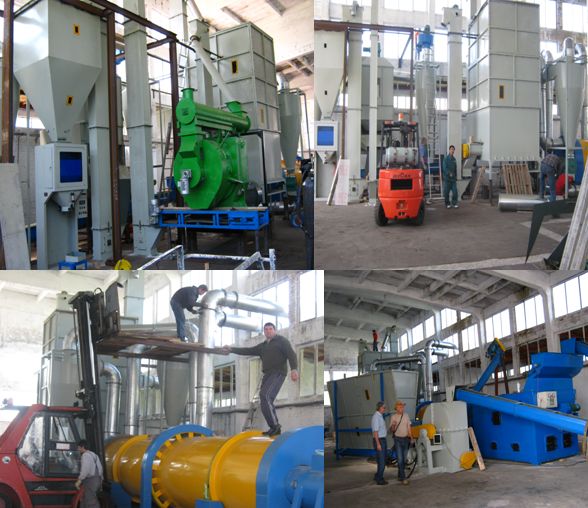

6. Price trends
In Germany the wood pellet prices have been fairly steady with price levels of 170 to 190€/t till 2005. In 2006 prices started to rise with a peak price over 260€/t in December. In the following years such a peak did not recur and prices have been rather stable even though at a higher level. In general, seasonally variations with higher prices during the heating period and lower prices in summer can be observed. During 2010 the prices for wood pellets ranged between 218 and 234€/t.
Prospect of wood pellet mills developing across Germany
We have been dealing with German pellet plant project for a while and our German clients feel satisfied with our wood pellet mill and wood pellet plant. We hope more clients can have the chance of enjoying our high-quality wood pellet mill and wood pellet plant.
------------------------------------------------------------------------------------------------------------------------------------------------------
Prospect of wood pellet mills developing across Germany
We have been dealing with German pellet plant project for a while and our German clients feel satisfied with our wood pellet mill and wood pellet plant. We hope more clients can have the chance of enjoying our high-quality wood pellet mill and wood pellet plant.
------------------------------------------------------------------------------------------------------------------------------------------------------
In 2012, Kingman was honored to recieve a pellet plant from Russian client in St.Petersbrug. And the 500kg/h biomass pellet plant with the KMPM350 pellet mill was transported to Russia in Oct. 2013.
News
- Small Pellet Machine Manufacturer-Kingman
- Application of Wood Pellets and Use of Biomass Pellets
- From Fossil Fuel into Biomass Pellet Fuel
- Biomass Pellet Making Machines Market
- Applying of pellet stoves for home use
- Highland pellets to build $130 million facility in arkansas
- How to deal with the blocked hammer mill
- How to Make Wood Pellets with Sawdust
- The government policy promotes the development of biomass fuel
- Market analysis of biomass pellet fuel
- Strategic positioning of renewable energy
- Biomass energy has pass through the pre assessment
- The key point of deep processing of biomass pellet
- Harbin is promoting the development of biomass machinery
- The development of biomass formation technology I
- The development of biomass formation technology II
- Biomass energy industry is now going full tilt in 2015
- Rapid increasing demand of sawdust pellet on the market
- Pellet fuel market in EU
- Chinese Biomass Energy Conference held in Beijing
- Future market development of straw pellet mill
- Peanut Shell Pellet Mill Makes High Quality Pellets
- The utilization of straw is only 5%, biomass energy needs our attention!
- Corn straw pellet machine relieves the tight supply of fuel energy
- Reasons for loose or not forming of biomass pellet mill


